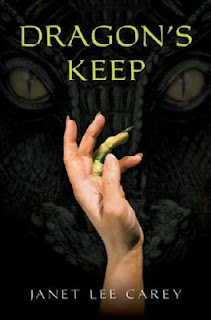 |
| Illustrated by Frances Tyrrell, Dutton, 1990. |
It's the holidays and the last thing on your mind is historical fiction--right? That was not a question. But wait! Bookmark this page, because the The Huron Carol is a trail head into history any time of year.
‘Twas in the moon of wintertime
When all the birds had fled,
That mighty Gitchi Manitou*
Sent angel choirs instead.
Before their light the stars grew dim,
And wand’ring hunters heard the hymn:
“Jesus, your king, is born.
Jesus is born. In excelsis gloria!”
That mighty Gitchi Manitou*
Sent angel choirs instead.
Before their light the stars grew dim,
And wand’ring hunters heard the hymn:
“Jesus, your king, is born.
Jesus is born. In excelsis gloria!”
"The Huron Carol" was written in Huron by the Jesuit missionary Jean de Brébeuf (1643) who lived with the people for 22 years. He was tortured and killed when the Iroquois raided the Huron, nearly annihilating them. Many assimilated with other tribes. A small group, known as the Wyandott eventually migrated to Oklahoma, where they live today, and a larger group, the Wendat, followed the French priests and now live in Québec.
 |
| Illus. Ian Wallace, Groundwood Books, 2013 |
Ehstehn yayau deh tsaun we yisus ahattonnia
O na wateh wado:kwi nonnwa 'ndasqua entai
ehnau sherskwa trivota nonnwa 'ndi yaun rashata
Iesus Ahattonnia, Ahattonnia, Iesus Ahattonnia
Ayoki onki hm-ashe eran yayeh raunnaun
yauntaun kanntatya hm-deh 'ndyaun sehnsatoa ronnyaun
Waria hnawakweh tond Yosehf sataunn haronnyaun
Iesus Ahattonnia, Ahattonnia, Iesus Ahattonnia
ehnau sherskwa trivota nonnwa 'ndi yaun rashata
Iesus Ahattonnia, Ahattonnia, Iesus Ahattonnia
Ayoki onki hm-ashe eran yayeh raunnaun
yauntaun kanntatya hm-deh 'ndyaun sehnsatoa ronnyaun
Waria hnawakweh tond Yosehf sataunn haronnyaun
Iesus Ahattonnia, Ahattonnia, Iesus Ahattonnia
What is most astonishing about "The Huron Carol" was Brébeuf's cultural awareness at this period in history when sensitivity and respect for other people groups was not part of the psychological landscape. His retelling of the Christmas story in a form that was relevant for the people is worthy of note. It must have impressed the Wendat, too, because they sang the carol for a hundred years in their own language before it was translated into French. In 1926, Jesse Edgar Middleton composed the English Lyrics, which is how it is best known today.
There is only one surviving verse in Huron and two in 18th century French. The English verses are more of a re-visioning than a translation. Here are the words of the original:
"Jesus, He is Born"
Have courage, you who are human beings: Jesus, he is born
The okie spirit who enslaved us has fled
Don't listen to him for he corrupts the spirits of our thoughts
Jesus, he is born
The okie spirits who live in the sky are coming with a message
They're coming to say, "Rejoice!
Mary has given birth. Rejoice!"
Jesus, he is born
Brébeuf set the Carol to a 16th Century French song "Une Jeune Pucelle." It entered the public domain in 2011. There are many versions on You Tube that could be used in the classroom. Tom Jackson has a version that I like in particular because in addition to being a musician and actor, he is an outstanding philanthropist. One of his fundraising campaigns was the Huron Carol Tour.
Some more excellent links and comments are in Emily Gleichenhaus's blog post. Here is another lovely version of the carol sung by the Elora Festival Singers, Canada. Happy Holidays!
* "Gitchi Manitou" is an Algonquin term that Middleton used for Great Spirit, but it is not from the Wendat language. Although today this is poor scholarship and culturally insensitive, it was not considered so in 1926. Another possible topic for discussion with students.
Michele Hathaway is a
writer and freelance editor. She has an M. A. in Social Anthropology and has
worked in libraries in California, New Mexico, and Pennsylvania. She writes
stories set in culturally diverse, historical and contemporary periods.
Subscribe to get posts automatically and never miss a post. You can use the Subscribe buttons to the right, or addhttp://madaboutmghistory.

































